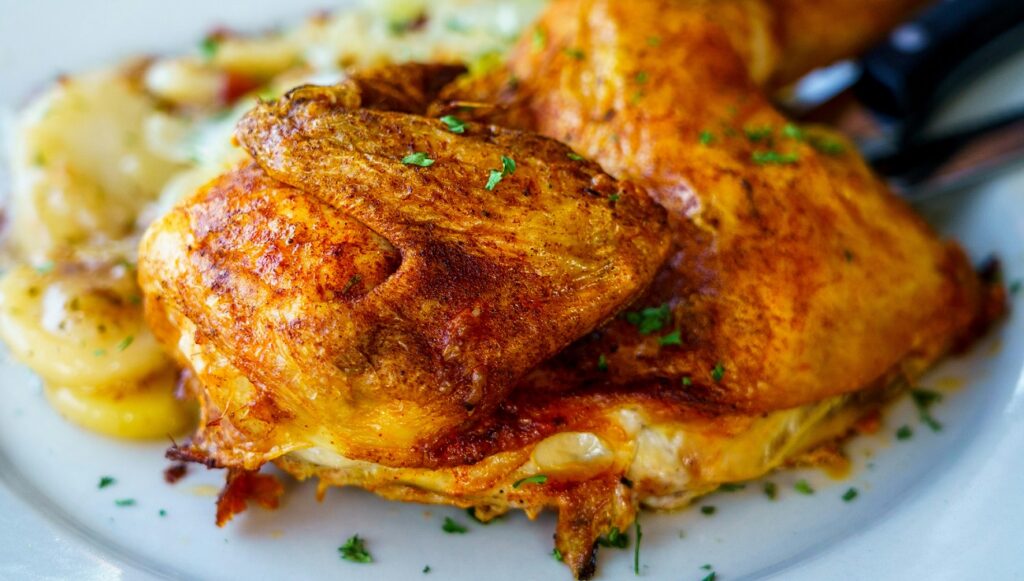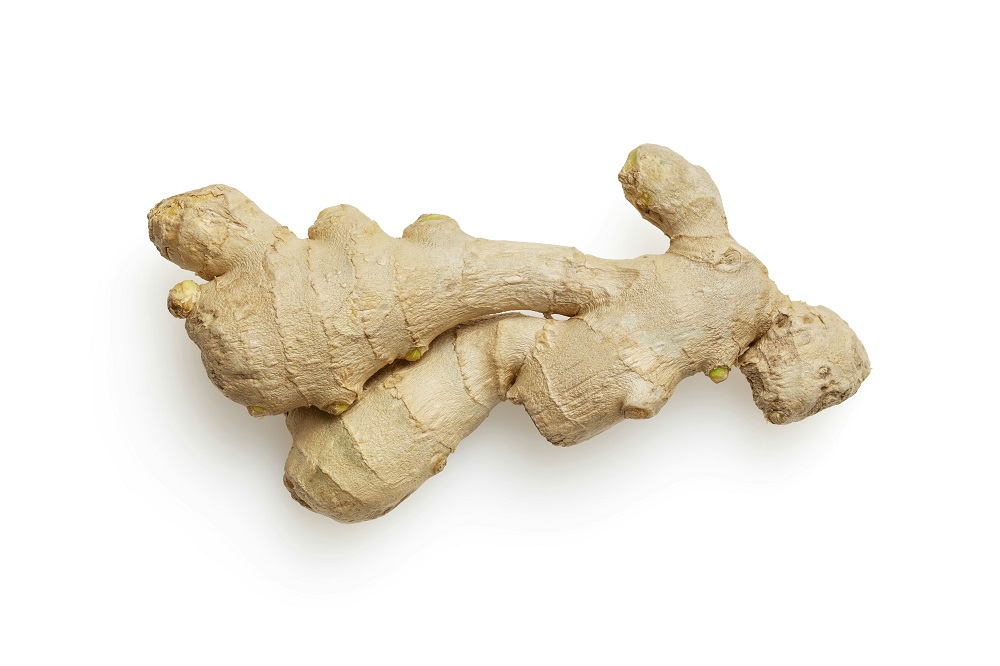Metabolism plays a crucial role in weight loss and fat burning. It’s the process through which your body converts food into energy. The faster your metabolism, the more calories you burn, even at rest. While exercise is important for boosting metabolism, certain foods can also significantly aid in speeding up this process. In this guide, Mohit Tandon Chicago explore 15 fat-burning foods that are proven to Boost your metabolism and help you achieve your weight loss goals.
1. Green Tea: A Metabolism-Boosting Drink
Green tea has long been celebrated for its numerous health benefits, one of which is its ability to increase metabolism. It contains a group of antioxidants known as catechins, particularly epigallocatechin gallate (EGCG), which are believed to increase energy expenditure and fat oxidation. Studies suggest that drinking green tea can enhance fat burning, particularly during exercise, and increase resting metabolic rate.
How Green Tea Fires Up Your Metabolism:
The combination of caffeine and catechins in green tea work synergistically to improve fat oxidation and increase thermogenesis, the process through which your body generates heat and burns calories. A study showed that individuals who drank green tea experienced increased calorie burning, even when not exercising. It’s also a great beverage to include in your daily routine as it hydrates the body and provides a mild caffeine boost without the jitters that coffee can cause. – Mohit Tandon Chicago
How to Incorporate Green Tea:
You can enjoy 2-3 cups of green tea a day to experience its fat-burning effects. For an added metabolism boost, consider drinking it before or after workouts.

2. Coffee: A Natural Metabolism Booster
Coffee is not just a pick-me-up in the morning; it also has fat-burning potential. Caffeine, the primary active ingredient in coffee, stimulates the central nervous system and increases the release of fatty acids into the bloodstream. This process makes it easier for your body to burn fat as fuel.
How Coffee Supports Metabolism:
Caffeine enhances metabolic rate by stimulating the production of adrenaline, which signals the body to break down fat. Studies have shown that caffeine can increase calorie expenditure and improve exercise performance, making it a popular choice for those looking to lose weight. Furthermore, coffee can also reduce appetite, which may help control overall calorie intake.
How to Use Coffee for Metabolism:
Stick to moderate consumption, typically 1-2 cups of black coffee a day, to avoid potential side effects like anxiety or sleep disturbances. Avoid sugary syrups and creamers, as they can add unwanted calories.

3. Chili Peppers: Spice Up Your Fat-Burning Potential
Chili peppers, particularly those that contain capsaicin, are known for their ability to increase metabolism. Capsaicin is a compound that gives chili peppers their spicy kick and can enhance fat oxidation by increasing the body’s thermogenesis process. It also temporarily increases heart rate and energy expenditure.
How Chili Peppers Work:
The capsaicin in chili peppers has been shown to increase calorie burning by up to 50 calories per day. This thermogenic effect means that consuming chili peppers may help to reduce body fat, particularly abdominal fat. Additionally, capsaicin may promote satiety, helping to curb hunger and reduce overall calorie intake.
How to Incorporate Chili Peppers:
You can add chili peppers or chili powder to your meals, soups, and stews. A small amount of chili peppers can go a long way in boosting metabolism, so incorporate them into your diet as desired.
4. Lean Protein: Fueling Muscle and Boosting Fat Burn
Lean protein sources such as chicken breast, turkey, fish, and plant-based options like tofu and legumes are essential for supporting metabolism and fat loss. Protein is essential for building and maintaining muscle mass, which in turn helps to increase metabolism.
How Lean Protein Aids Metabolism:
Protein has a high thermic effect, meaning that your body burns more calories digesting and processing protein than it does with fats or carbohydrates. This process is called the thermic effect of food (TEF). A diet higher in protein can increase calorie burning and reduce fat accumulation. Furthermore, lean protein helps to preserve muscle mass during weight loss, which can help keep your metabolism elevated.
How to Incorporate Lean Protein:
Include lean protein in each meal, focusing on chicken, fish, eggs, and plant-based proteins. Aim for at least one protein-rich meal per day to support muscle maintenance and fat burning.

5. Whole Grains: Keeping Your Metabolism Running Smoothly
Whole grains like brown rice, quinoa, oats, and barley are rich in fiber, which plays an important role in boosting metabolism. Unlike refined grains, which are quickly digested and cause spikes in blood sugar, whole grains have a slower digestion rate, providing a sustained energy release and preventing energy crashes.
How Whole Grains Support Metabolism:
The fiber in whole grains helps to regulate blood sugar levels and keeps you feeling full for longer. Additionally, the digestion of whole grains requires more energy, which can slightly boost metabolism. Studies suggest that consuming more fiber can help with weight management by reducing calorie intake and increasing fat burning.
How to Use Whole Grains:
Incorporate a variety of whole grains into your diet, such as quinoa, brown rice, or whole oats, to provide a steady source of energy and fiber that supports metabolic health.
6. Apple Cider Vinegar: Aiding Fat Burning and Digestion
Apple cider vinegar (ACV) has been used as a natural remedy for various health conditions, including fat loss. It contains acetic acid, which is thought to promote fat burning by increasing metabolism and suppressing fat storage.
How ACV Helps Burn Fat:
Research suggests that ACV can lower blood sugar levels and improve insulin sensitivity, making it easier for the body to burn fat. Additionally, consuming apple cider vinegar may increase the feeling of fullness, reducing overall calorie intake. ACV also helps improve digestion, supporting a healthy gut, which is crucial for efficient metabolism.
How to Use ACV:
Dilute 1-2 tablespoons of apple cider vinegar in a glass of water and drink it before meals. Start with small amounts and gradually increase to avoid digestive discomfort.
7. Ginger: A Natural Fat-Burning Agent
Ginger is a versatile root that has been used in traditional medicine for centuries. It contains bioactive compounds like gingerol, which have anti-inflammatory and thermogenic properties that can help boost metabolism.
How Ginger Supports Fat Loss:
Ginger has been shown to increase the thermic effect of food, thereby raising energy expenditure. It can also enhance fat oxidation, which makes it easier for the body to burn fat as fuel. Additionally, ginger may help reduce appetite and improve digestion, leading to better overall metabolism.
How to Incorporate Ginger:
Add fresh ginger to smoothies, teas, or stir-fries. You can also use ginger powder or ginger oil to season dishes for an extra metabolism boost.

8. Berries: Rich in Antioxidants and Fiber
Berries such as blueberries, raspberries, and strawberries are packed with antioxidants and fiber. These nutrients play a key role in boosting metabolism and supporting fat loss by promoting digestion and improving insulin sensitivity.
How Berries Help with Fat Burning:
The high fiber content of berries helps slow digestion and promotes feelings of fullness, reducing the likelihood of overeating. Additionally, berries are rich in antioxidants, which help reduce inflammation in the body, a common factor that can hinder fat loss. Studies suggest that consuming berries can improve fat oxidation, contributing to more efficient fat burning.
How to Use Berries:
Add fresh or frozen berries to your smoothies, yogurt, or oatmeal. You can also enjoy them as a healthy snack or mix them into salads.
9. Coconut Oil: A Fat-Burning Fat
Coconut oil is rich in medium-chain triglycerides (MCTs), a type of fat that is metabolized differently from other fats. MCTs are absorbed quickly and converted into energy, which helps increase calorie burning and supports weight loss.
How Coconut Oil Supports Fat Burning:
MCTs in coconut oil have been shown to increase metabolism and fat oxidation. Studies have found that consuming MCT oil can lead to greater calorie burning compared to longer-chain fats. Additionally, coconut oil helps improve fat distribution by promoting the reduction of abdominal fat, which is notoriously difficult to lose.
How to Incorporate Coconut Oil:
Use coconut oil as a cooking oil or add it to smoothies, coffee, or teas. Make sure to use it in moderation, as it is still a calorie-dense fat.
10. Eggs: A Protein-Packed Metabolism Booster
Eggs are one of the best sources of high-quality protein, which is essential for boosting metabolism. They are rich in essential amino acids that aid in muscle building, which, in turn, increases metabolism.
How Eggs Help with Metabolism:
Eggs are known for their high thermic effect. Eating a protein-rich food like eggs increases the thermic effect of food (TEF), meaning your body uses more energy to digest and process them. Additionally, eggs are nutrient-dense and can help control hunger, preventing overeating and promoting fat loss.
How to Incorporate Eggs:
Enjoy eggs in various forms—boiled, scrambled, poached, or in omelets. Incorporate them into breakfast or use them as a protein-rich snack.

11. Nuts: Healthy Fats That Help Burn Fat
Nuts, particularly almonds, walnuts, and pistachios, are rich in healthy fats, fiber, and protein. These nutrients not only help keep you full and satisfied but also support a healthy metabolism.
How Nuts Support Fat Burning:
Nuts have been shown to increase calorie burning and improve metabolic rate due to their high protein and fiber content. The healthy fats in nuts also help reduce inflammation, which can improve overall metabolic function. Despite being calorie-dense, nuts can actually help with weight loss by promoting satiety and reducing hunger.
How to Incorporate Nuts:
Add a handful of nuts to your diet each day as a snack or sprinkle them over salads, yogurt, or oatmeal for an added metabolism boost.
12. Turmeric: A Powerful Anti-Inflammatory Spice
Turmeric is a bright yellow spice commonly used in cooking and medicine. The active compound in turmeric, curcumin, has powerful anti-inflammatory and antioxidant properties that help improve metabolism and fat loss.
How Turmeric Boosts Metabolism:
Curcumin has been shown to increase thermogenesis and fat oxidation, which supports fat burning. It also helps improve insulin sensitivity, making it easier for the body to burn fat for energy. Additionally, turmeric helps reduce inflammation in the body, which can hinder metabolic processes.
How to Use Turmeric:
Add turmeric to curries, soups, smoothies, or teas. You can also create a golden milk drink by mixing turmeric with warm milk or a non-dairy alternative.
13. Leafy Greens: Nutrient-Dense Metabolism Boosters
Leafy greens like spinach, kale, and Swiss chard are low in calories but high in fiber, vitamins, and minerals. These nutrient-dense foods play a crucial role in supporting metabolism and fat burning.
How Leafy Greens Help with Fat Burning:
Leafy greens are packed with fiber, which supports digestion and promotes feelings of fullness, reducing overeating. They are also rich in magnesium, which is involved in over 300 metabolic processes in the body. Including these greens in your diet helps ensure that your metabolism functions optimally.
How to Incorporate Leafy Greens:
Add leafy greens to salads, smoothies, or stir-fries. They are versatile and can be included in nearly every meal for an extra metabolism boost.
14. Yogurt: Probiotic Power for Metabolic Health
Yogurt, particularly Greek yogurt, is a great source of protein and probiotics, which are beneficial for gut health. A healthy gut can significantly impact your metabolism and fat-burning abilities. – Mohit Tandon Chicago
How Yogurt Supports Metabolism:
Probiotics in yogurt help balance gut bacteria, which can influence metabolism and fat storage. Studies suggest that individuals with a healthy gut microbiome tend to have better metabolic function and lower levels of body fat. Additionally, the protein content in yogurt increases the thermic effect of food, helping to burn more calories during digestion.
How to Use Yogurt:
Enjoy yogurt as a snack, or add it to smoothies, parfaits, or oatmeal. Opt for plain, unsweetened yogurt to avoid added sugars.
15. Fish: Omega-3 Fatty Acids for a Faster Metabolism
Fish like salmon, mackerel, and sardines are rich in omega-3 fatty acids, which are known to boost metabolism and reduce fat accumulation.
How Fish Helps with Fat Burning:
Omega-3 fatty acids improve fat oxidation and can help reduce body fat by enhancing metabolic rate. They also improve insulin sensitivity and reduce inflammation, making it easier for the body to burn fat and maintain a healthy metabolism.
How to Incorporate Fish:
Aim to eat fatty fish 2-3 times per week. Grilled, baked, or steamed fish are healthy and delicious options that support metabolic health.
Conclusion: Fuel Your Metabolism with These Fat-Burning Foods
Incorporating these 15 fat-burning foods into your diet can significantly support your metabolism, helping you burn more calories and fat throughout the day. By eating a balanced diet that includes green tea, protein-rich foods, healthy fats, and antioxidant-rich fruits and vegetables, you can fire up your metabolism and achieve your weight loss goals more effectively. The key is consistency—make these foods part of your daily routine to see long-term benefits.
